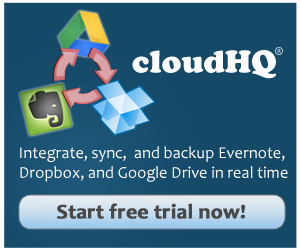
Remote worker use is rising in companies globally as the benefits of using the cloud to enhance worker productivity is becoming more well-known. We have previously covered the emergence of BYOD (Bring your own Device), as well as BYOS (Bring your own Service). In 2012, 63% of companies acknowledged that they are using remote workers, an increase of 29% since 2005 when only 34% of companies used workers remotely. A survey of employees found that 39% reported spending some time working remotely. Of course, using remote workers comes with added responsibilities as their work must be monitored remotely and a certain level of trust must be given. There are a number of security measures that should be implemented, as well as pitfalls which should be avoided. But overall, the benefits of BYOD far outweigh the cons. We scoured the web and came up with a list of tools that companies can use to enhance their remote workers’ productivity and efficiency.
Basecamp: The ultimate project management tool
Basecamp is the ultimate project management tool for a variety of industreies. Many small business, large companies and corporations take advantage of the many benefits that Basecamp has to offer- mainly complete project management on a single page. Everything from a calendar, reminders, discussions, tasks, to-do lists and more- all wrapped up on a single page for efficiency and organization. Law firms, real estate brokerages and teachers use Basecamp to manage their everyday projects, no matter how large or small.
Google+ Hangouts: Company video meetings
Communication is a strong point when dealing with remote workers, as you can’t just walk down to their cubicle and speak to them. They must be available remotely, either by phone, instant messaging system, or video chat. Video chat is most effective as the employer can get a visual of the employee while communicating with them. It’s especially efficient as meetings can be set up between multiple remote workers simultaneously. Google+ hangouts is one of the best video messaging apps around. Google+ hangouts supports up to 10 users and has an Android app. iOS and Mac users can also join in (providing they have a Google account). One of the features, Hangouts on Air, allows users to stream any hangout to Google+, send it to YouTube, or broadcast it to a website. Users can also snap and share screenshots from the hangout and Hangouts integrates with apps such as Cacoo and SlideShare for presentation and art management.
Intuit Online Payroll: Payroll management
Payroll management of remote workers is a quick and easy task with Intuit Online Payroll, which allows users to export results to QuickBooks and the setup wizard guides users through all tasks to ensure that nothing is forgotten or overlooked. The payroll information can be accessed from a web browser or mobile device, making it simple to manage payroll from any remote location that has internet access.
Expensify: Expense management
Expensify is a simple app that can be installed on a remote employee’s phone. The employee can then record expenses on the go and take snapshots of receipts. The app uses GPS to monitor the miles the employee is driving and also has time tracking and invoicing features. If the workers import bank and credit card transaction data, the app will generate e-receipts that are legal for use with the IRS, so no stored paper copies are necessary. Expensify integrates with many other cloud services including Google Apps, Evernote, Salesforce, QuickBooks, FinancialForce, NetSuite, FreshBooks and more.
cloudHQ: Don’t put all your eggs in one basket
With the implementation of BYOD and remote workers comes the risk of security lapses or data leakage. The possibility of data loss becomes very real if an employee loses their mobile device or it becomes stolen. A lapse in security can allow authentication values to be stolen. This can lead to security breaches in which hackers may delete data in the account. This when cloudHQ can step in to help.
All work performed on mobile devices should be sent to a company cloud storage account, or even multiple cloud services. Documents and notes can be created and stored in Evernote or Google Drive. Project management files can be created and stored in Basecamp. But if a hacker is able to access any of these accounts, they can delete all company’s files. But by implementing cloudHQ, a separate cloud account (such as Dropbox) is used to create a backup account. CloudHQ then syncs all files from Evernote, Google Drive, etc. to the backup account in Dropbox. So no matter what happens to data in the main company cloud accounts, the backup copies of the data remain safe and secure.
Related articles
- Bosses without borders: Essential tools for managing remote workers (pcadvisor.co.uk)
- Taxonomy: How To Properly Organize Your Files In The Cloud (cloudhq.net)
- How To Use Dropbox, Evernote And Google Drive For Project Managers (cloudhq.net)
- Hubstaff Launches Productivity-Boosting Time Tracking Software with… (prweb.com)
- 9 Google Apps That Your Business Can’t Live Without (business2community.com)
- BYOD use rises among businesses (shoretelsky.com)
- cloudHQ – Sync Google Drive, Dropbox, Evernote, Basecamp (futurelawyer.typepad.com)
- Expensify expands capabilities to create ‘expense reports that don’t suck’ (pcworld.com)
- Unlocking the potential of mobile devices (epicafinance.com)
